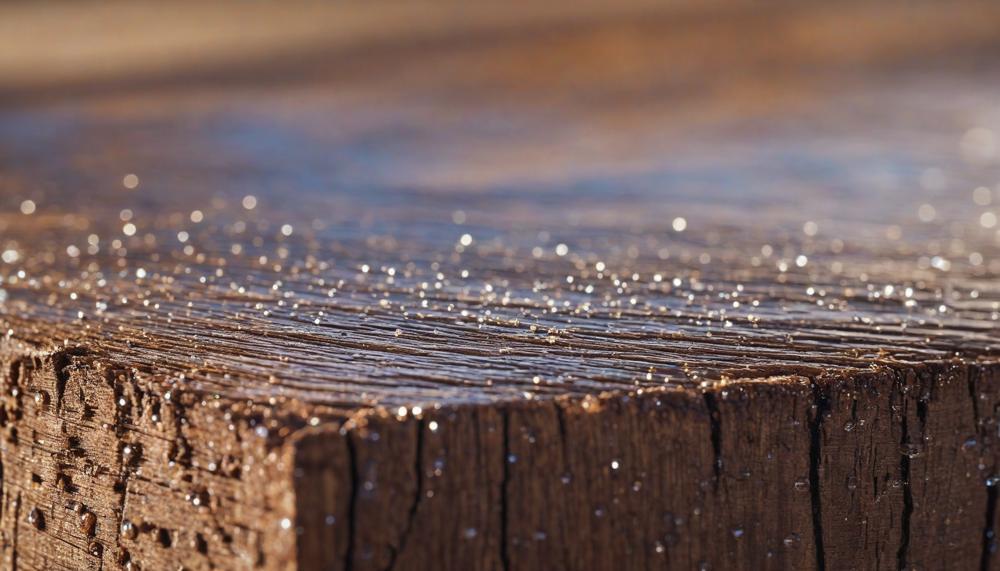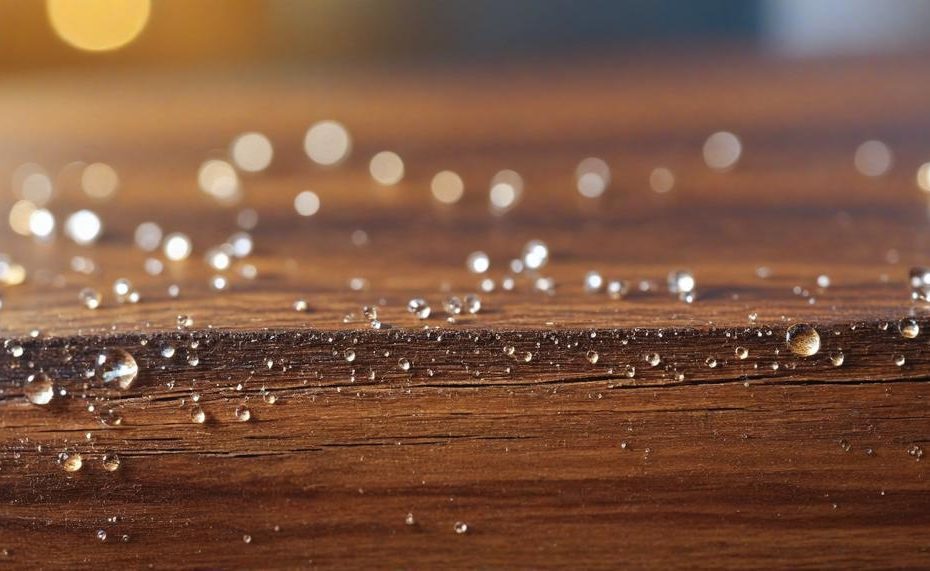No, not all wood glues are waterproof. Understanding the differences among wood glues is crucial for any woodworking project, whether you’re crafting a simple bookshelf or constructing an intricate outdoor piece. Some wood glues are designed to withstand moisture, making them ideal for exterior projects, while others excel in providing strong bonds in dry conditions. The key is knowing which type of glue to use for your specific needs.
Wood glue forms a permanent chemical bond between two pieces of wood, ensuring durability and strength. With numerous options available, ranging from PVA to polyurethane, the right choice can make all the difference. Here are the key takeaways:
- Polyurethane Glue: Waterproof, suitable for outdoor projects, but can be toxic and irritating to the skin.
- PVA Glue: Typically not waterproof, ideal for indoor furniture and projects.
- CA Glue: Provides temporary bonds, useful for quick repairs but not for long-term outdoor use.
- Water-Resistant Options: Many wood glues offer water resistance, making them versatile for various conditions.
Choosing the right wood glue can enhance the longevity and functionality of your project. Stay tuned as we explore the specifics of each type and help you determine the best option for your woodworking needs.
Table of Contents
Definition of Wood Glue
Wood glue is a specific type of adhesive used predominantly for bonding pieces of wood together in various woodworking projects. This adhesive is essential for creating robust and durable finishes, ensuring the integrity and longevity of the woodwork.
Wood glue creates a permanent chemical bond between wooden surfaces, resulting in a connection often stronger than the wood itself.
Differences Between Wood Glue and Other Types of Glue
Wood glue stands out from other types of glue due to its unique properties and specific applications. Here’s a detailed comparison highlighting these distinctions:
| Type of Glue | Primary Use | Key Characteristics |
| Wood Glue | Bonding wood pieces |
|
| Super Glue (CA) | Quick repairs on various materials |
|
| Epoxy | Heavy-duty bonding |
|
| Hot Glue | Crafts and light repairs |
|
Wood glue’s ability to penetrate wood fibers makes it superior for woodworking, ensuring the bond is both robust and long-lasting. For outdoor projects, polyurethane wood glue is often preferred due to its waterproof properties, though care must be taken due to its potential toxicity and skin irritation.
Types of Wood Glue
When working with wood, selecting the appropriate glue is crucial for ensuring durability and strength, especially concerning waterproofing. Here’s a detailed look at the different types of wood glue and their waterproofing abilities:
| Type of Glue | Description | Waterproofing Abilities |
| PVA (Polyvinyl Acetate) | PVA glue, also known as white glue or carpenter’s glue, is the most common type of wood glue. It is easy to use and clean up, making it ideal for general woodworking projects. | PVA glues are typically water-resistant, but not all are waterproof. Look for labels like “Type I” or “Type II” for higher water resistance. Type I PVA glue can withstand more exposure to moisture. |
| Epoxy | Epoxy glue is a two-part adhesive that, when mixed, forms a strong, durable bond. It is excellent for filling gaps and bonding dissimilar materials. | Epoxy is highly waterproof and is suitable for outdoor projects or applications where the bond may be exposed to moisture or water. |
| Polyurethane | Polyurethane glue is known for its strong bonding capabilities and versatility in bonding various materials. It expands as it cures, filling gaps effectively. | Polyurethane glue is waterproof and ideal for outdoor use. It forms a bond that is resistant to water, making it suitable for projects exposed to the elements. |
| Hide Glue | Hide glue is a traditional adhesive made from animal collagen. It is valued for its reversibility and the ability to bond without damaging delicate materials. | Hide glue is not waterproof. It can be softened and undone with heat and moisture, making it less suitable for projects exposed to water. |
| Cyanoacrylate (CA) | CA glue, commonly known as super glue, is a fast-acting adhesive that bonds quickly. It is used for small repairs and projects requiring rapid bonding. | CA glue is water-resistant but not waterproof. It holds up well under occasional exposure to moisture but is not suitable for prolonged water contact. |
Selecting the right wood glue depends on your specific needs, especially concerning exposure to moisture. For outdoor projects or where water resistance is crucial, opt for epoxy or polyurethane glues.
Factors to Consider When Choosing Wood Glue for Outdoor Use
Factors to consider when choosing a wood glue for outdoor use in order to ensure that it is waterproof and will withstand the elements include several key aspects.
Each factor plays a crucial role in ensuring that your outdoor woodworking projects remain durable and intact despite harsh environmental conditions.
| Factor | Importance | Examples |
| Water Resistance | Essential for preventing bond failure due to moisture. | Gorilla Waterproof Glue, Titebond III Ultimate Wood Glue |
| UV Resistance | Prevents degradation from sun exposure. | Polyurethane and epoxy glues. |
| Temperature Tolerance | Critical for maintaining bond strength in varying climates. | Polyurethane glues. |
| Flexibility | Allows the bond to adapt to wood expansion and contraction. | Polyurethane glues. |
| Bond Strength | Ensures durability and longevity of the bond. | Epoxy glues. |
| Curing Time | Quick curing can be beneficial for fast project completion. | Epoxy glues. |
| Application Method | Proper application is crucial for effective bonding. | Follow manufacturer instructions. |
Best Wood Glue for Outdoor Use
Based on extensive research and user experiences, the top three waterproof wood glues suitable for outdoor use are:
- Gorilla Waterproof Glue – This glue offers robust protection against the elements. It dries clear, ensuring it doesn’t affect the aesthetic of your project. It’s especially favoured for its ease of use and reliability in harsh weather conditions.
- Titebond III Ultimate Wood Glue – Known for its superior water resistance, Titebond III is ideal for a wide variety of outdoor woodworking projects. It provides a strong, durable bond that withstands the elements, making it a top choice among professionals and hobbyists alike.
- Epoxy Glue – Epoxy glue is renowned for its strength and moisture resistance, suitable for both indoor and outdoor applications. However, it should be noted that exposure to UV rays over time can cause epoxy to become brittle.
| Product | Key Features | Considerations |
| Gorilla Waterproof Glue |
|
|
| Titebond III Ultimate Wood Glue |
|
|
| Epoxy Glue |
|
|
How to Apply Wood Glue for Outdoor Use
Applying wood glue for outdoor use involves specific steps to ensure a robust and waterproof bond. Follow these steps for optimal results:
Choose the Right Glue
Select a wood glue designed for outdoor use, such as polyurethane or epoxy. Examples include Titebond III Ultimate Wood Glue and Gorilla Waterproof Exterior Wood Glue.
Prepare the Surface
Clean the wood surfaces thoroughly. Remove any dirt, dust, or grease using a damp cloth and let it dry completely.
Sand the surfaces to create a rough texture for better adhesion.
Apply the Glue
Spread a thin, even layer of glue on one of the surfaces using a brush or a glue applicator.
Ensure the entire surface is covered without excess glue spilling out.
Clamp the Pieces
- Align the wood pieces correctly and clamp them together tightly.
- Use appropriate clamps that provide even pressure across the glued surfaces.
- Keep the pieces clamped for at least 24 hours to allow the glue to cure fully.
Clean Excess Glue
Wipe off any excess glue that squeezes out during clamping with a damp cloth before it dries.
Curing Time
- Allow the glued pieces to cure for 24-48 hours before exposing them to outdoor conditions.
- Check the glue manufacturer’s instructions for specific curing times.
Seal and Protect
- For added protection, apply a waterproof sealant or outdoor varnish over the glued area once it has cured.
- This helps to further safeguard the bond from moisture and UV rays.
Additional Tips:
- Avoid gluing in extremely humid or cold conditions as this can affect the bond strength.
- Store your wood glue in a cool, dry place to maintain its effectiveness.
Materials Needed:
| Materials | Purpose | Examples |
| Wood Glue | Bonding Wood | Titebond III, Gorilla Glue |
| Clamps | Hold Pieces Together | Bar Clamps, C-Clamps |
| Sandpaper | Prepare Surface | 80-120 Grit |
| Clean Cloth | Remove Dust/Dirt | Microfiber Cloth |
| Brush/Applicator | Spread Glue | Glue Brush |

Conclusion
When choosing wood glue for your projects, understanding their properties is key to ensuring durability and performance, especially regarding water resistance. Not all wood glues are created equal, and their suitability varies based on the project at hand. Here’s a concise guide to help you make the right choice.
Polyurethane Glue
Polyurethane glue stands out as a waterproof option, making it ideal for outdoor projects. Its ability to withstand moisture ensures your creations remain intact despite weather conditions. However, be cautious as it can be toxic and irritating to the skin during application.
PVA Glue
Commonly known as white glue or carpenter’s glue, PVA glue is excellent for indoor projects due to its strong bond and easy cleanup. While typically not waterproof, some formulations like Type I or Type II offer higher water resistance, suitable for projects occasionally exposed to moisture.
Epoxy
For the ultimate in waterproof bonding, epoxy glue is the go-to choice. Its two-part system creates a highly durable bond, perfect for outdoor use where the adhesive might face prolonged exposure to water.
CA Glue
Also known as super glue, CA glue provides a quick, temporary bond. It’s water-resistant but not waterproof, making it suitable for quick fixes rather than long-term outdoor use.
Hide Glue
Traditional hide glue offers the advantage of reversibility, allowing for repairs without damaging delicate materials. However, it is not waterproof and is best used for indoor applications where moisture exposure is minimal.
Choosing the right glue enhances your project’s longevity and functionality. For outdoor projects, prioritize polyurethane or epoxy glues for their superior waterproof properties. For indoor projects, PVA glue remains a versatile and reliable choice.






